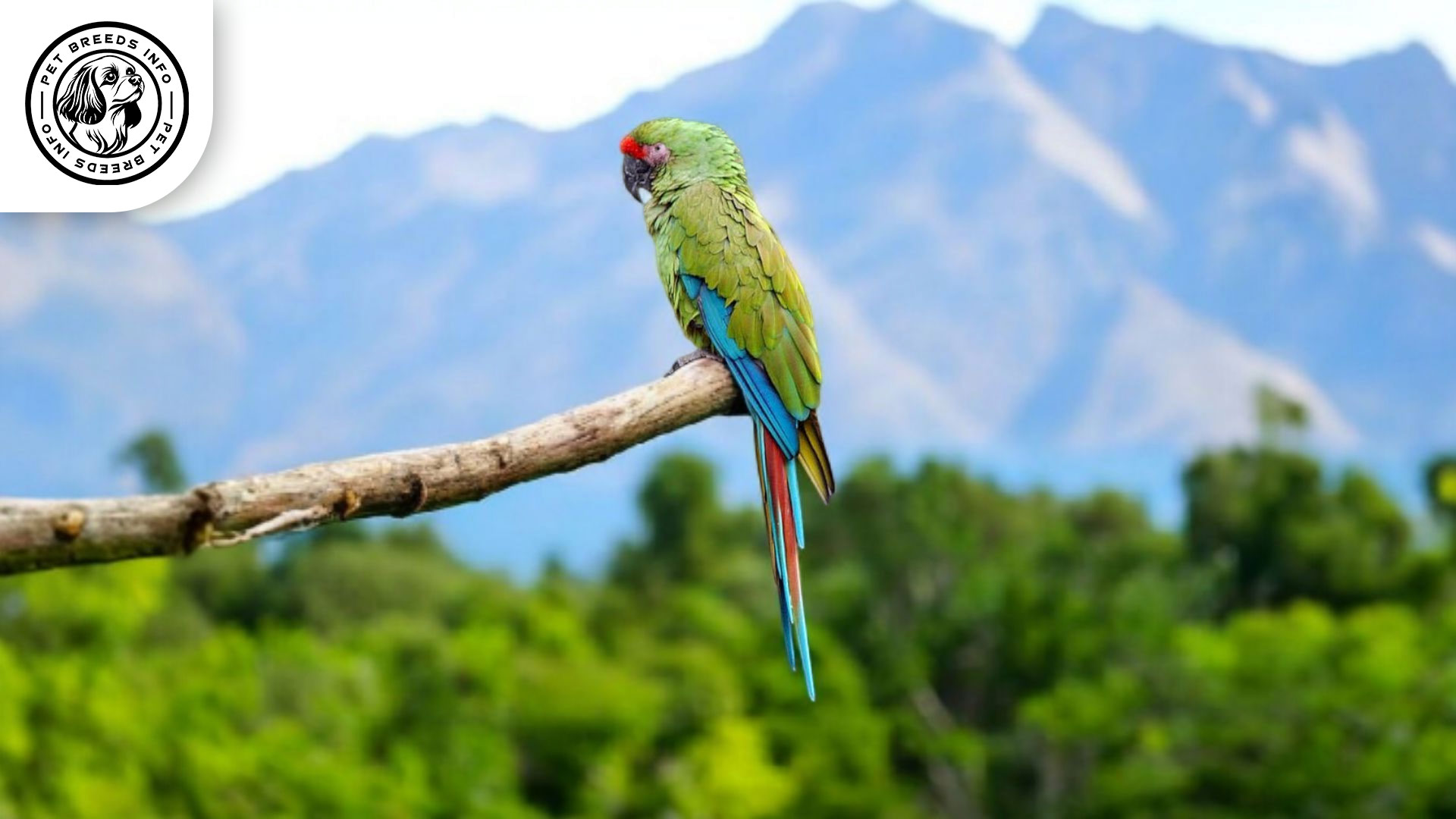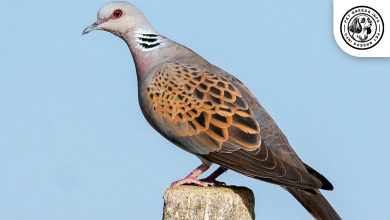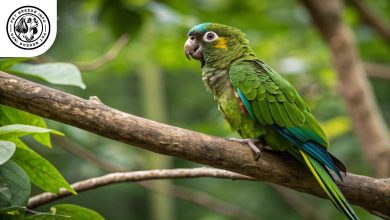Military Macaw Bird: Personality, Lifespan, Food & Care
General Introduction of the Breed
The Military Macaw (Ara militaris) is a striking parrot species native to the forests of Mexico, Central America, and northern South America. It was named “Military Macaw” due to its green plumage resembling military uniforms. Historically, these birds have been highly valued for their intelligence and striking appearance, often kept as pets or featured in aviaries.
Table of Contents
| Common Name | Military Macaw |
| Scientific Name | Ara militaris |
| Origin | Mexico, Central America, and Northern South America |
| Size | Medium-large; 27–31 inches (70–80 cm), 900–1,100 g |
| Lifespan | 50–60 years |
| Colors | Green body, red forehead, blue flight feathers, red/blue tail accents |
| Talking Ability | Moderate—can mimic words and sounds |
| Noise Level | Moderate to high—can be loud without interaction |
| Social Behavior | Affectionate, energetic, forms strong bonds |
Physical Characteristics
Size: 70-80 cm (27-31 inches)
Weight: 900-1100 grams (2-2.4 lbs)
Coat Type and Color: Primarily green with blue flight feathers, a red forehead, and a light-colored beak. The tail feathers have red and blue shades.
Eye Shape and Color: Round eyes with a light yellow or white iris.
Ears and Tail: The ears are small and hidden by feathers, while the tail is long and tapered.
Distinctive Physical Traits: Bare facial skin with black lines, sturdy, hooked beak designed for cracking hard nuts and seeds.
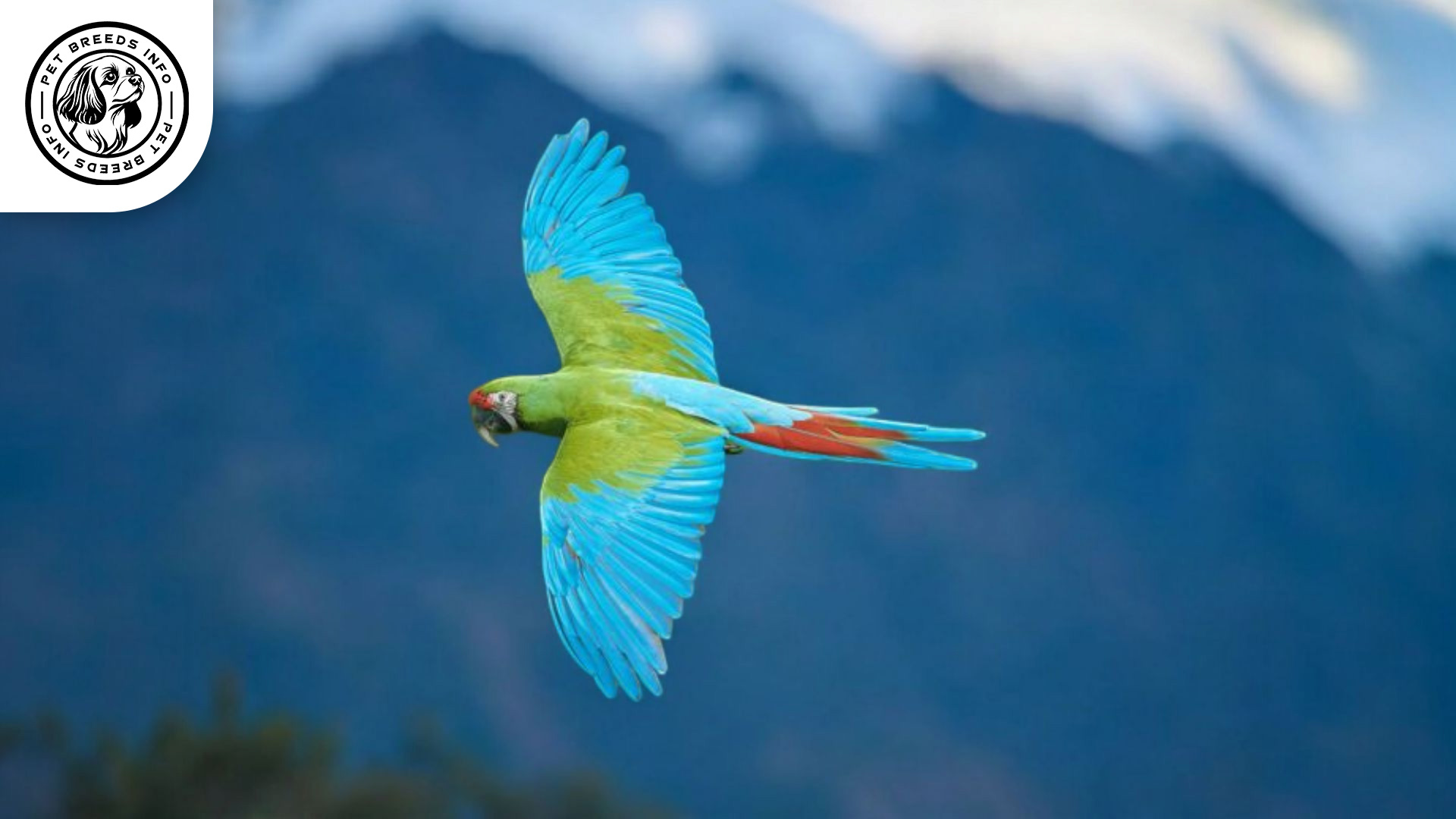
Personality and Temperament
Military Macaws are known for their intelligence and ability to mimic sounds and words, although they are not the most talkative of macaw species. They are energetic birds that require mental stimulation and regular interaction. These parrots form strong bonds with their owners and can be affectionate and playful when socialized properly.
They are generally social birds and can get along well with other macaws or parrots, but they require early training to ensure a well-balanced temperament. They thrive in stable environments and may become stressed with sudden changes or neglect.
Care and Maintenance Requirements
These birds need ample space to move and fly, making large aviaries or spacious enclosures ideal for their well-being. If kept indoors, they should have time outside of their cages daily for exercise and interaction.
Military Macaws require regular grooming, including beak maintenance, nail trimming, and occasional baths to keep their feathers clean. They do not tolerate extreme temperatures well, so their environment should be kept at a comfortable temperature with minimal drafts.
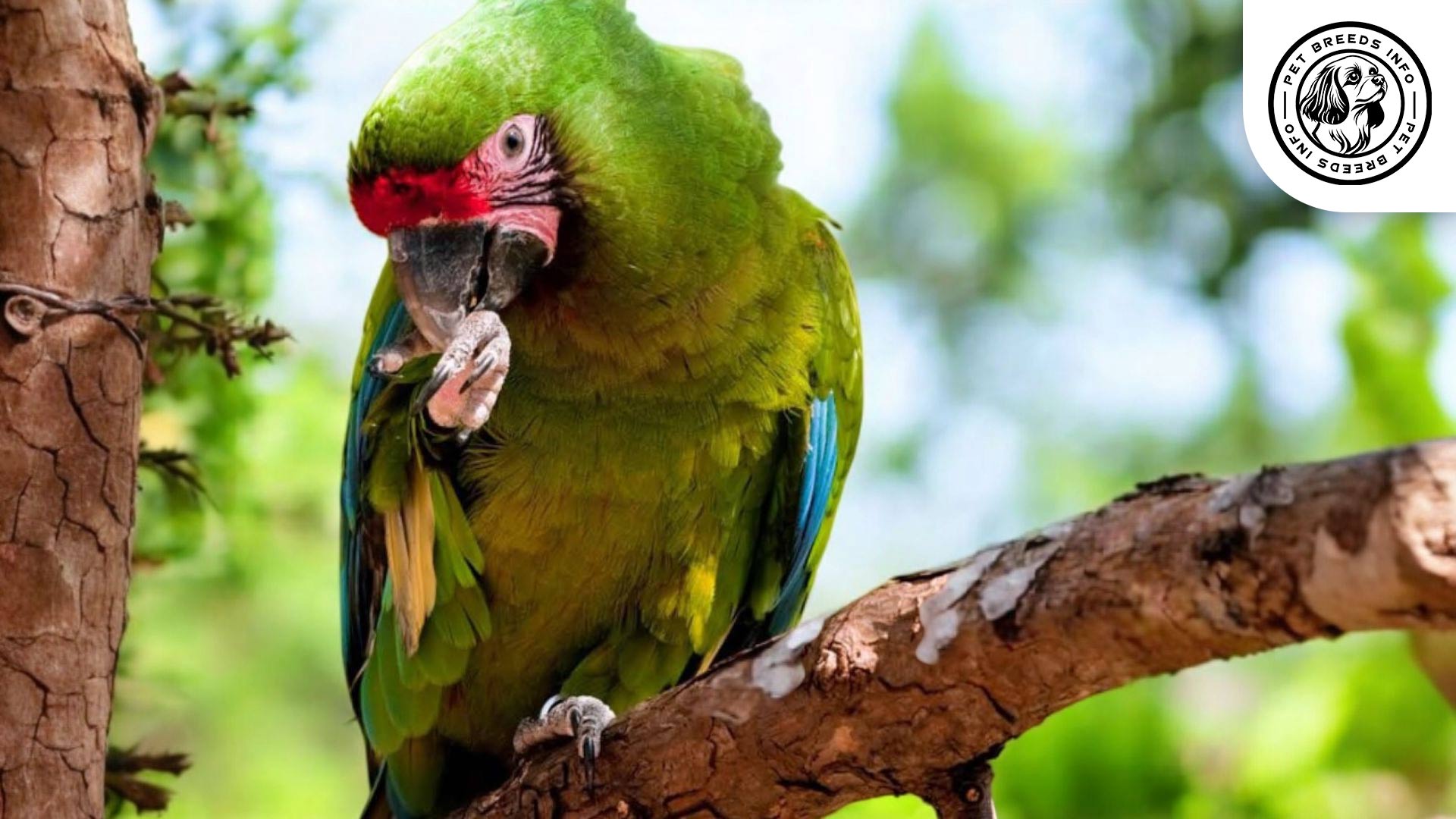
Diet and Nutrition
The ideal diet for a Military Macaw consists of a high-quality pellet mix, fresh fruits, nuts, and vegetables. These birds enjoy foods like apples, mangoes, carrots, and leafy greens.
Foods to avoid include chocolate, caffeine, avocado, onions, and salty or sugary foods, as these can be toxic to parrots.
Read More: Ixworth Chicken
Military Macaws should be fed twice a day, with portions adjusted based on their activity level and overall health.
Health and Common Medical Issues
Like many parrots, Military Macaws can suffer from common avian diseases such as psittacosis, feather plucking due to stress or boredom, respiratory infections, and beak overgrowth.
They typically live between 50-60 years with proper care, meaning owners should be prepared for long-term commitment.
Regular veterinary check-ups, vaccinations, and parasite control are essential for maintaining their health.
Training and Behavior Management
Training Military Macaws can be an enjoyable yet time-intensive process. They respond well to positive reinforcement techniques, including treats and verbal praise.
Early socialization is key to ensuring they develop a friendly temperament. Consistent training sessions, patience, and a structured environment help prevent behavioral problems.
Due to their intelligence, interactive toys and puzzles can stimulate their minds and prevent destructive behaviors.
Interaction with Other Animals and Humans
Military Macaws can be good companions for both individuals and families, but they require dedicated time and attention.
Read More: Java Finch (Java Sparrow) Bird
They generally enjoy interacting with humans and can be affectionate, though they may become territorial or nippy if not properly socialized.
They can coexist with other birds given adequate space and gradual introductions, but their dominant nature might lead to conflicts if housed with smaller species.
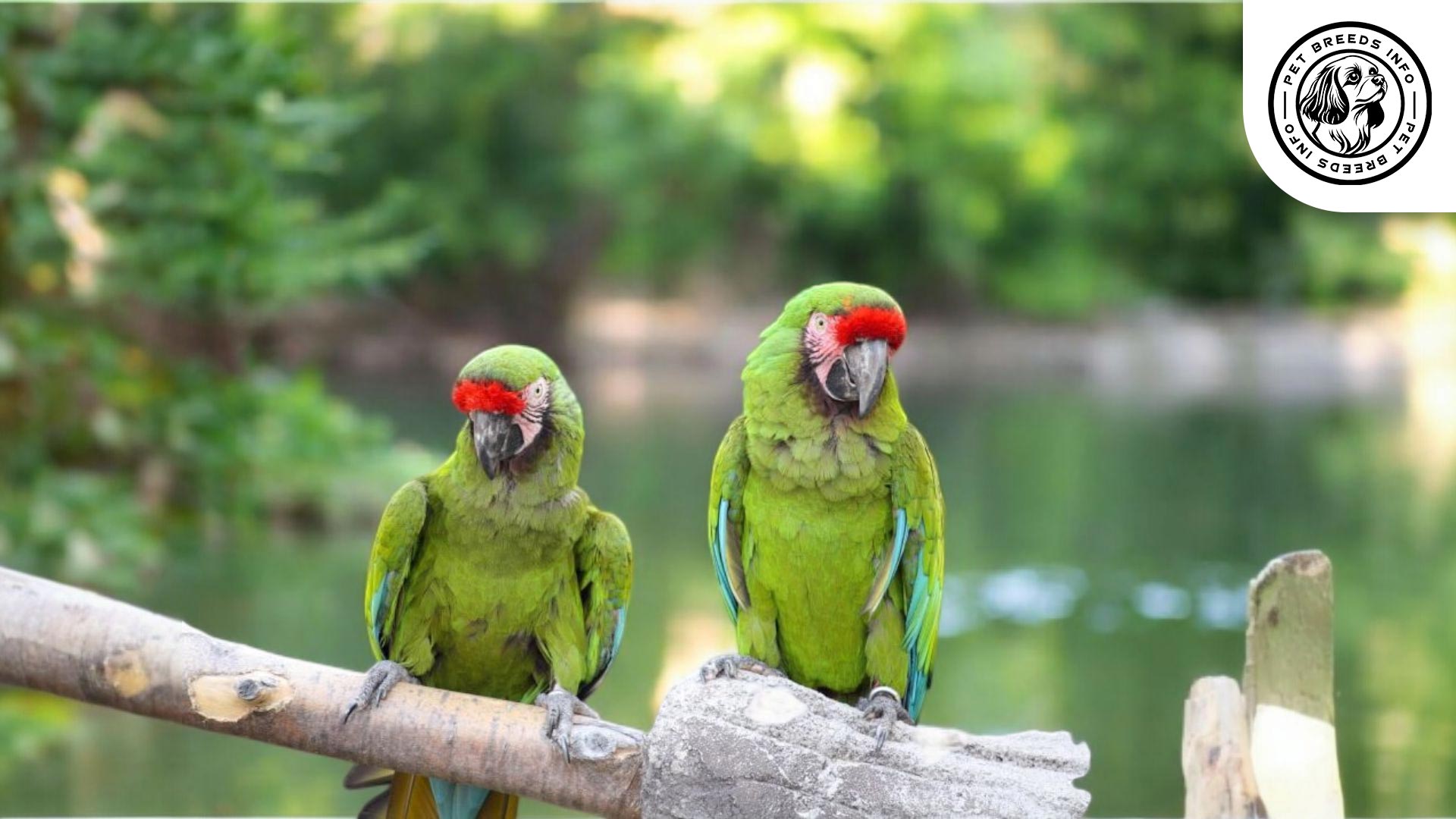
Price and Availability
Military Macaws can be expensive, typically ranging between $2,000 and $4,000, depending on the breeder, age, and lineage.
It is recommended to acquire a Military Macaw from reputable breeders, adoption centers, or rescue organizations to ensure ethical and healthy sourcing.
Potential owners should verify that the bird is legally obtained, as some wild populations of Military Macaws are at risk due to habitat loss and illegal pet trade activities.
Conclusion and Final Thoughts
The Military Macaw is an intelligent, affectionate, and visually striking parrot that makes a rewarding companion for dedicated and experienced bird owners.
Due to their long lifespan, high energy levels, and social needs, they are best suited for individuals who can provide frequent interaction, spacious housing, and proper enrichment.
Read More: Blue-throated Macaw Bird
If you are ready for a long-term commitment and have the time and resources to care for a Military Macaw, this bird can be a wonderful and entertaining feathered friend.
FAQ
Why is it called the Military Macaw?
Its name comes from its green plumage, which resembles the color of military uniforms.
Are Military Macaws good talkers?
They have moderate talking ability; they can mimic words and sounds but aren’t the most talkative macaw species.
How long do Military Macaws live?
With proper care, they can live between 50 to 60 years, requiring a long-term commitment from owners.
What kind of housing do they need?
A large aviary or spacious cage with time outside for flying and exercise is ideal.
